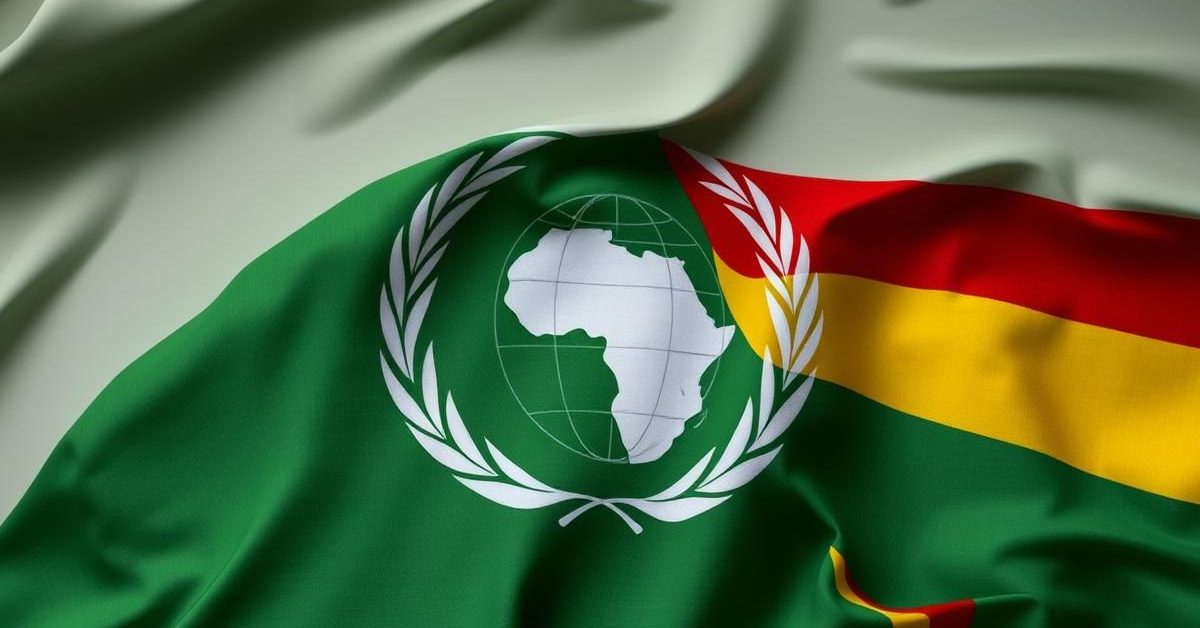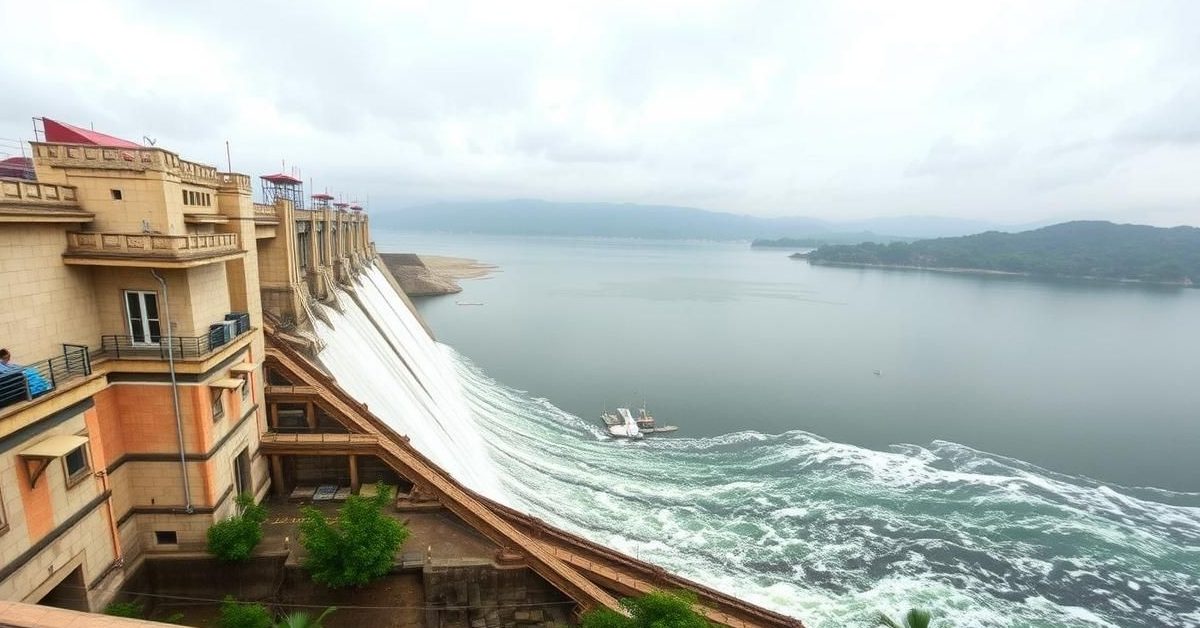India is seeing significant developments across various sectors, from private participation in its nuclear power program and strategic considerations over transboundary rivers, to judicial interpretations of constitutional powers, the ongoing implementation of a major education policy, and efforts to boost foreign investment amidst global economic shifts.
Private Sector Boosts India’s Nuclear Power
For the first time, India’s nuclear establishment is involving private players in a critical process for its nuclear power plants. Mumbai-based TEMA India has opened a facility in Palghar to test equipment for upgrading depleted heavy water, a vital component for Pressurized Heavy Water Reactors (PHWRs).
This role was previously handled exclusively by the Bhabha Atomic Research Centre (BARC). The technology transfer from BARC to TEMA India, under a purchase order from NPCIL, aligns with India’s “Atma-Nirbhar Bharat” initiative, promoting self-reliance in strategic sectors.
The move is a step towards India’s ambitious target of achieving 100 GW of installed nuclear energy capacity by 2047, enhancing the domestic nuclear supply chain.
China’s Mega Dam on Brahmaputra Sparks Concern
China has begun constructing a massive hydropower project on the Yarlung Tsangpo River (Brahmaputra in India) in Tibet, costing $167.8 billion. This project, located near the Indian border, involves multiple cascade hydropower plants and potentially diverting half of the river’s flow.
India, as a lower riparian state, is deeply concerned about the downstream impact, including potential interference with water flow, increased flooding risks, and the seismic vulnerability of the construction area. China has proceeded without prior consultation, despite international principles of “equitable and reasonable utilisation” and the “obligation not to cause significant harm” for shared watercourses.
Presidential Reference Seeks Supreme Court’s View
President Droupadi Murmu has invoked Article 143(1) of the Constitution to seek the Supreme Court’s advisory opinion regarding its recent judgment on the Tamil Nadu Governor. This case had indicted the Governor for excessive delays in assenting to bills passed by the Legislative Assembly, even suggesting a three-month timeline for the President on reserved bills.
While the Court’s opinion is not binding, it holds significant persuasive value for the future exercise of sovereign powers by both state governors and the central government. The reference highlights an ongoing discussion about the balance of power between constitutional institutions and concerns about judicial overreach.
Five Years of the National Education Policy 2020
Five years since its introduction, the National Education Policy (NEP) 2020 continues its transformative journey in India’s education landscape. A key change is the shift from the 10+2 system to a 5+3+3+4 structure, impacting foundational, preparatory, middle, and secondary schooling.
New curriculum frameworks and textbooks for classes 1-8 are already in use, with more to follow. Efforts are underway to universalize pre-primary learning, though challenges remain in training Anganwadi workers and improving early education infrastructure.
In higher education, initiatives like the Academic Bank of Credits (ABC) and the National Credit Framework (NCrF) allow students greater flexibility, enabling digital credit storage and multiple exit options for degrees.
Thailand-Cambodia Ceasefire: A Cultural Rivalry
After days of deadly border clashes, Thailand and Cambodia have agreed to an “immediate and unconditional ceasefire,” brokered by Malaysia. Tensions, simmering since May, escalated due to a disputed 1907 border and deep-seated cultural heritage rivalry.
At the heart of the dispute is the Preah Vihear temple, a site of immense cultural and religious significance to both predominantly Theravada-Buddhist nations. Nationalist rhetoric in both countries, often fueled by competing historical narratives, continues to drive animosity, impacting diplomatic and economic relations.
Nigeria’s GDP Rebound: The Effect of Rebasing
Nigeria’s economy recently jumped three spots in global GDP rankings, adding over $50 billion to its 2024 GDP. This significant increase resulted from a “rebasing” exercise, updating the base year for GDP calculation from 2010 to 2019.
The rebasing also involved expanding the methodology to include previously undercounted sectors like digital services and e-commerce, offering a more accurate picture of modern economic realities. India is also set to rebase its GDP to 2022-23, with updated figures expected in 2026.
India Wooing EU FDI with Regulatory Certainty
In ongoing trade talks, India is proposing a new chapter to offer long-term regulatory certainty in its manufacturing sector to attract foreign direct investment (FDI) from the European Union. This strategic move aims to leverage shared concerns with the EU regarding China’s manufacturing overcapacity.
The offer includes allowing 100 percent FDI in specific manufacturing sectors, potentially with conditions related to local employment and value addition. This approach, similar to those in recent trade deals with the UK and EFTA nations, signifies India’s proactive stance in reshaping its trade and investment landscape.
- India’s nuclear sector is opening to private participation to accelerate capacity expansion.
- China’s dam on the Brahmaputra raises significant environmental and geopolitical concerns for India.
- The Supreme Court’s advisory opinion on presidential powers will shape future institutional interactions.
- NEP 2020 is overhauling India’s education structure, from early childhood to higher learning, with both progress and challenges.
- GDP rebasing can significantly alter a country’s economic standing by updating calculation methodologies.
These developments underscore India’s ongoing efforts to modernize its infrastructure, refine its governance, adapt its educational framework, and navigate complex international relations and economic dynamics.
The user wants a rewritten news article.
I have to make sure it follows these constraints:
– Short introductory paragraph summarising the article in one line.
– Multiple section headings using `
` or `
` tags.
– Clear, conversational tone.
– Short paragraphs (1-3 sentences each).
– An optional key takeaways list using `
- ` formatting.
– Fully HTML-formatted output.
– Length between 300–600 words.
– No title/h1, emojis, asterisks, or markdown formatting.
I need to cover the various topics provided:
1. **Nuclear Power/Heavy Water Upgrade:** India’s first private test facility, TEMA India, BARC, PHWRs, Atma-Nirbhar Bharat, 2047 target.
2. **Brahmaputra River/UN Watercourses Convention:** China’s mega dam, India’s concerns (flow, flooding, seismic), international law (UNWC, Harmon Doctrine), China’s track record.
3. **Presidential Reference/Supreme Court:** Article 143, Tamil Nadu Governor case, advisory jurisdiction, judicial overreach, institutional balance.
4. **National Education Policy (NEP) 2020:** 5 years, 5+3+3+4 structure, NCFSE, pre-primary, ABC, NCrF, challenges.
5. **Thailand-Cambodia Conflict:** Ceasefire, border dispute, Preah Vihear temple, cultural heritage rivalry, nationalism.
6. **Nigeria GDP Rebasing:** What it is, why Nigeria did it, impact, India’s own rebasing.
7. **India-EU Trade Talks/FDI:** Regulatory certainty, manufacturing, wooing FDI, China overcapacity, conditions, other trade deals.
**Constraint Checklist & Confidence Score:**
1. Short introductory paragraph: Yes
2. Multiple section headings (h2/h3): Yes
3. Clear, conversational tone: Yes
4. Short paragraphs (1-3 sentences): Yes
5. Optional key takeaways list (ul/li): Yes
6. Fully HTML-formatted output: Yes
7. Length between 300-600 words: Will monitor during writing.
8. No title/h1, emojis, asterisks, markdown: Yes
Confidence Score: 5/5
**Mental Sandbox:**
I’ll draft each section, keeping paragraphs short and concise. For the key takeaways, I’ll pick 3-5 critical points that span the different topics. I’ll ensure the language is accessible and engaging, as requested for “mobile-first, high-engagement news content.” I’ll also pay attention to HTML formatting by writing directly in the desired structure. I’ll make sure to attribute information to the relevant entities (e.g., TEMA India, BARC, China, SC, etc.) as the source text does. I’ll also double-check the word count at the end. I think I can comfortably fit all topics within the word limit by being succinct.
Strategizing complete. I will now proceed with generating the response based on the plan.
India is seeing significant developments across various sectors, from private participation in its nuclear power program and strategic considerations over transboundary rivers, to judicial interpretations of constitutional powers, the ongoing implementation of a major education policy, and efforts to boost foreign investment amidst global economic shifts.
Private Sector Boosts India’s Nuclear Power
For the first time, India’s nuclear establishment is involving private players in a critical process for its nuclear power plants. Mumbai-based TEMA India has opened a facility in Palghar to test equipment for upgrading depleted heavy water, a vital component for Pressurized Heavy Water Reactors (PHWRs).
This role was previously handled exclusively by the Bhabha Atomic Research Centre (BARC). The technology transfer from BARC to TEMA India, under a purchase order from NPCIL, aligns with India’s “Atma-Nirbhar Bharat” initiative, promoting self-reliance in strategic sectors.
The move is a step towards India’s ambitious target of achieving 100 GW of installed nuclear energy capacity by 2047, enhancing the domestic nuclear supply chain.
China’s Mega Dam on Brahmaputra Sparks Concern
China has begun constructing a massive hydropower project on the Yarlung Tsangpo River (Brahmaputra in India) in Tibet, costing $167.8 billion. This project, located near the Indian border, involves multiple cascade hydropower plants and potentially diverting half of the river’s flow.
India, as a lower riparian state, is deeply concerned about the downstream impact, including potential interference with water flow, increased flooding risks, and the seismic vulnerability of the construction area. China has proceeded without prior consultation, despite international principles of “equitable and reasonable utilisation” and the “obligation not to cause significant harm” for shared watercourses.
Presidential Reference Seeks Supreme Court’s View
President Droupadi Murmu has invoked Article 143(1) of the Constitution to seek the Supreme Court’s advisory opinion regarding its recent judgment on the Tamil Nadu Governor. This case had indicted the Governor for excessive delays in assenting to bills passed by the Legislative Assembly, even suggesting a three-month timeline for the President on reserved bills.
While the Court’s opinion is not binding, it holds significant persuasive value for the future exercise of sovereign powers by both state governors and the central government. The reference highlights an ongoing discussion about the balance of power between constitutional institutions and concerns about judicial overreach.
Five Years of the National Education Policy 2020
Five years since its introduction, the National Education Policy (NEP) 2020 continues its transformative journey in India’s education landscape. A key change is the shift from the 10+2 system to a 5+3+3+4 structure, impacting foundational, preparatory, middle, and secondary schooling.
New curriculum frameworks and textbooks for classes 1-8 are already in use, with more to follow. Efforts are underway to universalize pre-primary learning, though challenges remain in training Anganwadi workers and improving early education infrastructure.
In higher education, initiatives like the Academic Bank of Credits (ABC) and the National Credit Framework (NCrF) allow students greater flexibility, enabling digital credit storage and multiple exit options for degrees.
Thailand-Cambodia Ceasefire: A Cultural Rivalry
After days of deadly border clashes, Thailand and Cambodia have agreed to an “immediate and unconditional ceasefire,” brokered by Malaysia. Tensions, simmering since May, escalated due to a disputed 1907 border and deep-seated cultural heritage rivalry.
At the heart of the dispute is the Preah Vihear temple, a site of immense cultural and religious significance to both predominantly Theravada-Buddhist nations. Nationalist rhetoric in both countries, often fueled by competing historical narratives, continues to drive animosity, impacting diplomatic and economic relations.
Nigeria’s GDP Rebound: The Effect of Rebasing
Nigeria’s economy recently jumped three spots in global GDP rankings, adding over $50 billion to its 2024 GDP. This significant increase resulted from a “rebasing” exercise, updating the base year for GDP calculation from 2010 to 2019.
The rebasing also involved expanding the methodology to include previously undercounted sectors like digital services and e-commerce, offering a more accurate picture of modern economic realities. India is also set to rebase its GDP to 2022-23, with updated figures expected in 2026.
India Wooing EU FDI with Regulatory Certainty
In ongoing trade talks, India is proposing a new chapter to offer long-term regulatory certainty in its manufacturing sector to attract foreign direct investment (FDI) from the European Union. This strategic move aims to leverage shared concerns with the EU regarding China’s manufacturing overcapacity.
The offer includes allowing 100 percent FDI in specific manufacturing sectors, potentially with conditions related to local employment and value addition. This approach, similar to those in recent trade deals with the UK and EFTA nations, signifies India’s proactive stance in reshaping its trade and investment landscape.
- India’s nuclear sector is opening to private participation to accelerate capacity expansion.
- China’s dam on the Brahmaputra raises significant environmental and geopolitical concerns for India.
- The Supreme Court’s advisory opinion on presidential powers will shape future institutional interactions.
- NEP 2020 is overhauling India’s education structure, from early childhood to higher learning, with both progress and challenges.
- GDP rebasing can significantly alter a country’s economic standing by updating calculation methodologies.
These developments underscore India’s ongoing efforts to modernize its infrastructure, refine its governance, adapt its educational framework, and navigate complex international relations and economic dynamics.
– Clear, conversational tone.
– Short paragraphs (1-3 sentences each).
– An optional key takeaways list using `
- ` formatting.
– Fully HTML-formatted output.
– Length between 300–600 words.
– No title/h1, emojis, asterisks, or markdown formatting.I need to cover the various topics provided:
1. **Nuclear Power/Heavy Water Upgrade:** India’s first private test facility, TEMA India, BARC, PHWRs, Atma-Nirbhar Bharat, 2047 target.
2. **Brahmaputra River/UN Watercourses Convention:** China’s mega dam, India’s concerns (flow, flooding, seismic), international law (UNWC, Harmon Doctrine), China’s track record.
3. **Presidential Reference/Supreme Court:** Article 143, Tamil Nadu Governor case, advisory jurisdiction, judicial overreach, institutional balance.
4. **National Education Policy (NEP) 2020:** 5 years, 5+3+3+4 structure, NCFSE, pre-primary, ABC, NCrF, challenges.
5. **Thailand-Cambodia Conflict:** Ceasefire, border dispute, Preah Vihear temple, cultural heritage rivalry, nationalism.
6. **Nigeria GDP Rebasing:** What it is, why Nigeria did it, impact, India’s own rebasing.
7. **India-EU Trade Talks/FDI:** Regulatory certainty, manufacturing, wooing FDI, China overcapacity, conditions, other trade deals.**Constraint Checklist & Confidence Score:**
1. Short introductory paragraph: Yes
2. Multiple section headings (h2/h3): Yes
3. Clear, conversational tone: Yes
4. Short paragraphs (1-3 sentences): Yes
5. Optional key takeaways list (ul/li): Yes
6. Fully HTML-formatted output: Yes
7. Length between 300-600 words: Will monitor during writing.
8. No title/h1, emojis, asterisks, markdown: YesConfidence Score: 5/5
**Mental Sandbox:**
I’ll draft each section, keeping paragraphs short and concise. For the key takeaways, I’ll pick 3-5 critical points that span the different topics. I’ll ensure the language is accessible and engaging, as requested for “mobile-first, high-engagement news content.” I’ll also pay attention to HTML formatting by writing directly in the desired structure. I’ll make sure to attribute information to the relevant entities (e.g., TEMA India, BARC, China, SC, etc.) as the source text does. I’ll also double-check the word count at the end. I think I can comfortably fit all topics within the word limit by being succinct.Strategizing complete. I will now proceed with generating the response based on the plan.
India is seeing significant developments across various sectors, from private participation in its nuclear power program and strategic considerations over transboundary rivers, to judicial interpretations of constitutional powers, the ongoing implementation of a major education policy, and efforts to boost foreign investment amidst global economic shifts.
Private Sector Boosts India’s Nuclear Power
For the first time, India’s nuclear establishment is involving private players in a critical process for its nuclear power plants. Mumbai-based TEMA India has opened a facility in Palghar to test equipment for upgrading depleted heavy water, a vital component for Pressurized Heavy Water Reactors (PHWRs).
This role was previously handled exclusively by the Bhabha Atomic Research Centre (BARC). The technology transfer from BARC to TEMA India, under a purchase order from NPCIL, aligns with India’s “Atma-Nirbhar Bharat” initiative, promoting self-reliance in strategic sectors.
The move is a step towards India’s ambitious target of achieving 100 GW of installed nuclear energy capacity by 2047, enhancing the domestic nuclear supply chain.
China’s Mega Dam on Brahmaputra Sparks Concern
China has begun constructing a massive hydropower project on the Yarlung Tsangpo River (Brahmaputra in India) in Tibet, costing $167.8 billion. This project, located near the Indian border, involves multiple cascade hydropower plants and potentially diverting half of the river’s flow.
India, as a lower riparian state, is deeply concerned about the downstream impact, including potential interference with water flow, increased flooding risks, and the seismic vulnerability of the construction area. China has proceeded without prior consultation, despite international principles of “equitable and reasonable utilisation” and the “obligation not to cause significant harm” for shared watercourses.
Presidential Reference Seeks Supreme Court’s View
President Droupadi Murmu has invoked Article 143(1) of the Constitution to seek the Supreme Court’s advisory opinion regarding its recent judgment on the Tamil Nadu Governor. This case had indicted the Governor for excessive delays in assenting to bills passed by the Legislative Assembly, even suggesting a three-month timeline for the President on reserved bills.
While the Court’s opinion is not binding, it holds significant persuasive value for the future exercise of sovereign powers by both state governors and the central government. The reference highlights an ongoing discussion about the balance of power between constitutional institutions and concerns about judicial overreach.
Five Years of the National Education Policy 2020
Five years since its introduction, the National Education Policy (NEP) 2020 continues its transformative journey in India’s education landscape. A key change is the shift from the 10+2 system to a 5+3+3+4 structure, impacting foundational, preparatory, middle, and secondary schooling.
New curriculum frameworks and textbooks for classes 1-8 are already in use, with more to follow. Efforts are underway to universalize pre-primary learning, though challenges remain in training Anganwadi workers and improving early education infrastructure.
In higher education, initiatives like the Academic Bank of Credits (ABC) and the National Credit Framework (NCrF) allow students greater flexibility, enabling digital credit storage and multiple exit options for degrees.
Thailand-Cambodia Ceasefire: A Cultural Rivalry
After days of deadly border clashes, Thailand and Cambodia have agreed to an “immediate and unconditional ceasefire,” brokered by Malaysia. Tensions, simmering since May, escalated due to a disputed 1907 border and deep-seated cultural heritage rivalry.
At the heart of the dispute is the Preah Vihear temple, a site of immense cultural and religious significance to both predominantly Theravada-Buddhist nations. Nationalist rhetoric in both countries, often fueled by competing historical narratives, continues to drive animosity, impacting diplomatic and economic relations.
Nigeria’s GDP Rebound: The Effect of Rebasing
Nigeria’s economy recently jumped three spots in global GDP rankings, adding over $50 billion to its 2024 GDP. This significant increase resulted from a “rebasing” exercise, updating the base year for GDP calculation from 2010 to 2019.
The rebasing also involved expanding the methodology to include previously undercounted sectors like digital services and e-commerce, offering a more accurate picture of modern economic realities. India is also set to rebase its GDP to 2022-23, with updated figures expected in 2026.
India Wooing EU FDI with Regulatory Certainty
In ongoing trade talks, India is proposing a new chapter to offer long-term regulatory certainty in its manufacturing sector to attract foreign direct investment (FDI) from the European Union. This strategic move aims to leverage shared concerns with the EU regarding China’s manufacturing overcapacity.
The offer includes allowing 100 percent FDI in specific manufacturing sectors, potentially with conditions related to local employment and value addition. This approach, similar to those in recent trade deals with the UK and EFTA nations, signifies India’s proactive stance in reshaping its trade and investment landscape.
- India’s nuclear sector is opening to private participation to accelerate capacity expansion.
- China’s dam on the Brahmaputra raises significant environmental and geopolitical concerns for India.
- The Supreme Court’s advisory opinion on presidential powers will shape future institutional interactions.
- NEP 2020 is overhauling India’s education structure, from early childhood to higher learning, with both progress and challenges.
- GDP rebasing can significantly alter a country’s economic standing by updating calculation methodologies.
These developments underscore India’s ongoing efforts to modernize its infrastructure, refine its governance, adapt its educational framework, and navigate complex international relations and economic dynamics.















